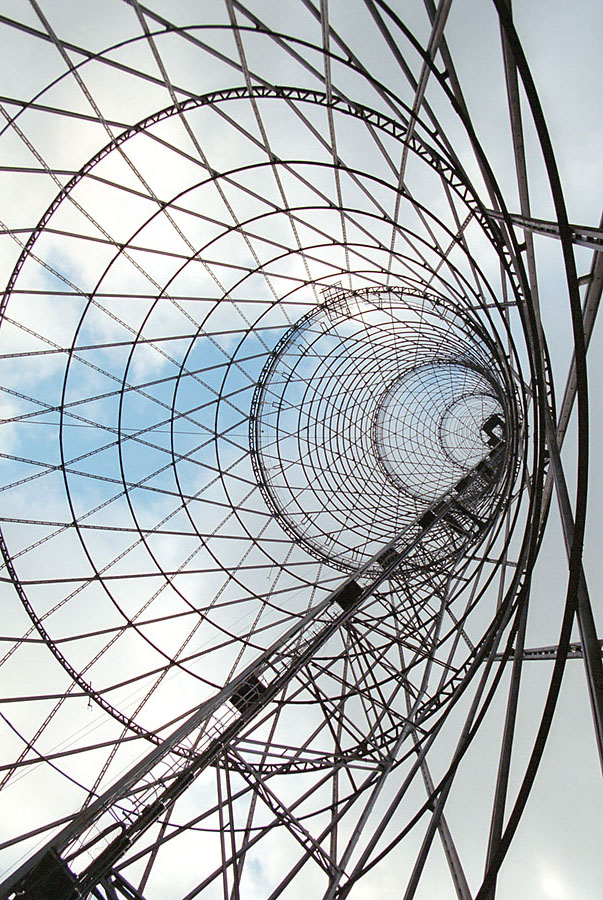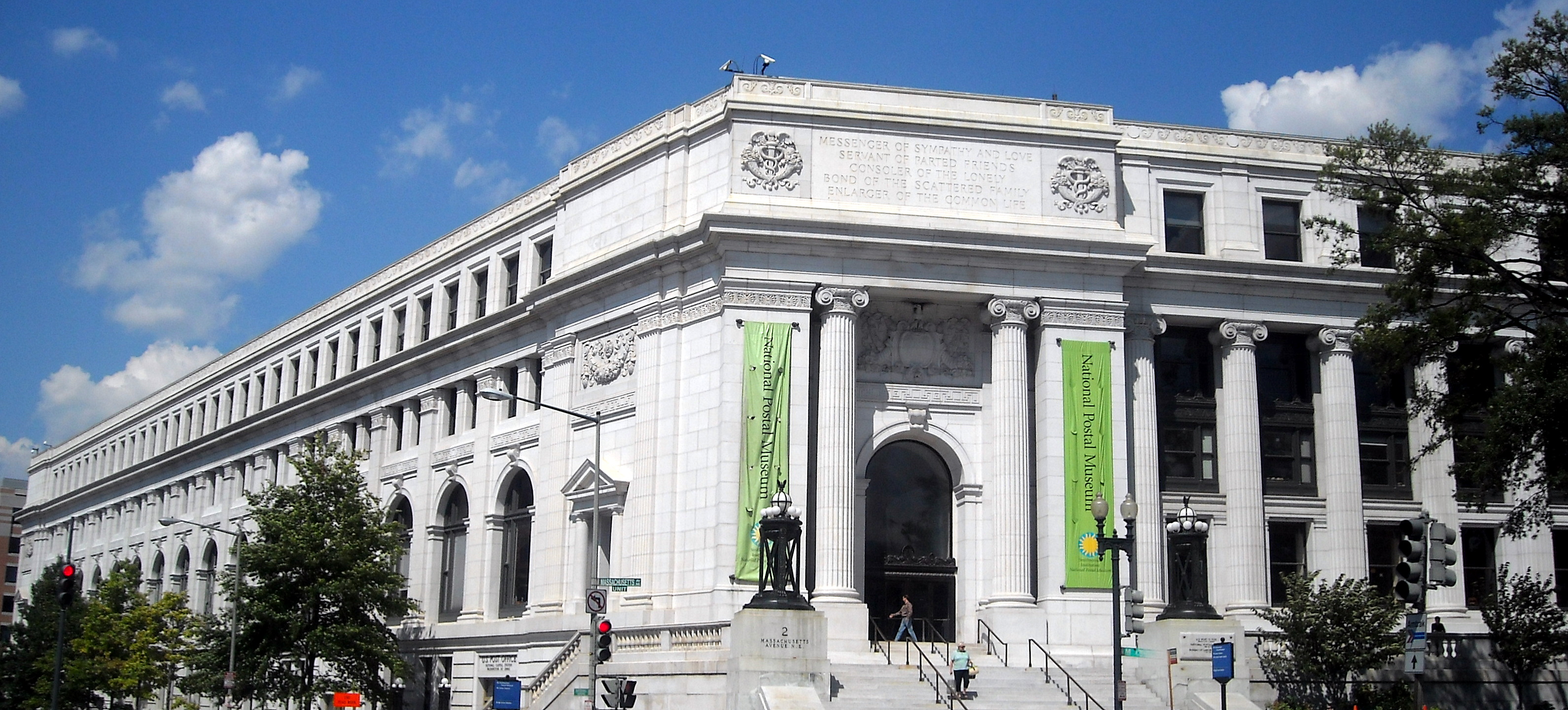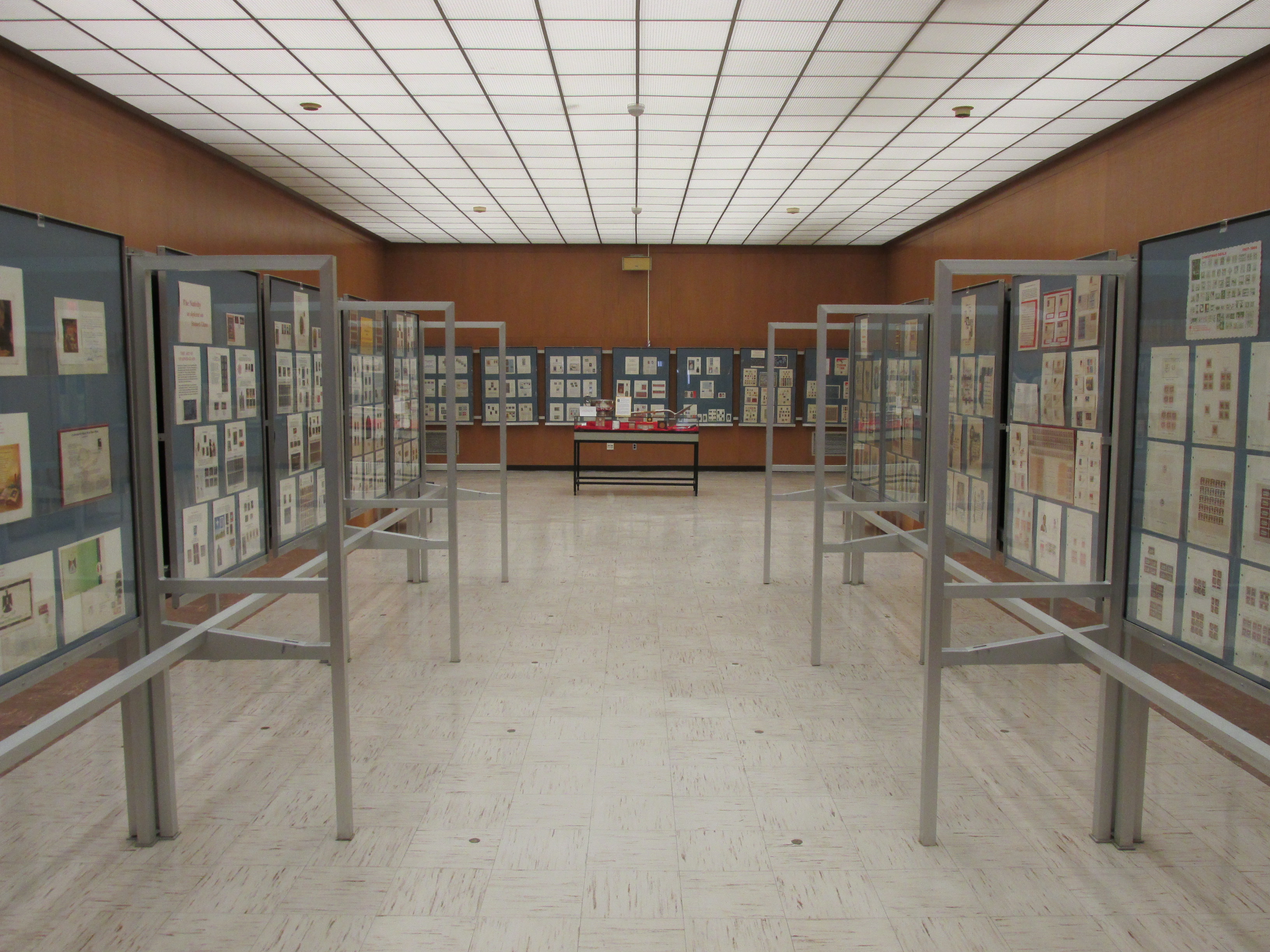|
A.S. Popov Central Museum Of Communications
The A.S. Popov Central Museum of Communications is a museum of science and technology founded in 1872. It is located in the historic centre of Saint Petersburg, Russia, near Saint Isaac's Square. History The museum was opened on 11 September 1872 as the Telegraph Museum. The head of the Telegraph Department of Russia Carl Luders proclaimed the foundation of this museum: In 1884, the post office branch was added and the museum was transformed into the Postal and Telegraph Museum. In 1945, the museum was named after the Russian scientist and inventor Alexander Stepanovich Popov. By the late 1970s, the museum housed more than 4 million stamps, stamped envelopes, and postcards. Nowadays, the museum is a leading institution in its field in the Russian Federation. As such, it provides consulting supervision for other telecommunications museums. Collections The museum archives and collections include over 8 million items including: * documents and items related to the history ... [...More Info...] [...Related Items...] OR: [Wikipedia] [Google] [Baidu] |
Saint Petersburg
Saint Petersburg ( rus, links=no, Санкт-Петербург, a=Ru-Sankt Peterburg Leningrad Petrograd Piter.ogg, r=Sankt-Peterburg, p=ˈsankt pʲɪtʲɪrˈburk), formerly known as Petrograd (1914–1924) and later Leningrad (1924–1991), is the second-largest city in Russia. It is situated on the Neva River, at the head of the Gulf of Finland on the Baltic Sea, with a population of roughly 5.4 million residents. Saint Petersburg is the fourth-most populous city in Europe after Istanbul, Moscow and London, the most populous city on the Baltic Sea, and the world's northernmost city of more than 1 million residents. As Russia's Imperial capital, and a historically strategic port, it is governed as a federal city. The city was founded by Tsar Peter the Great on 27 May 1703 on the site of a captured Swedish fortress, and was named after apostle Saint Peter. In Russia, Saint Petersburg is historically and culturally associated with t ... [...More Info...] [...Related Items...] OR: [Wikipedia] [Google] [Baidu] |
Philately
Philately (; ) is the study of postage stamps and postal history. It also refers to the collection and appreciation of stamps and other philatelic products. Philately involves more than just stamp collecting or the study of postage; it is possible to be a philatelist without owning any stamps. For instance, the stamps being studied may be very rare or reside only in museums. Etymology The word "philately" is the English transliteration of the French "", coined by Georges Herpin in 1864. Herpin stated that stamps had been collected and studied for the previous six or seven years and a better name was required for the new hobby than ''timbromanie'' (roughly "stamp quest"), which was disliked.Williams, L.N. & M. ''Fundamentals of Philately''. State College: The American Philatelic Society, 1971, p.20. The alternative terms "timbromania", "timbrophily", and "timbrology" gradually fell out of use as ''philately'' gained acceptance during the 1860s. Herpin took the Greek root word ... [...More Info...] [...Related Items...] OR: [Wikipedia] [Google] [Baidu] |
Telecommunications Museums
Telecommunication is the transmission of information by various types of technologies over wire, radio, optical, or other electromagnetic systems. It has its origin in the desire of humans for communication over a distance greater than that feasible with the human voice, but with a similar scale of expediency; thus, slow systems (such as postal mail) are excluded from the field. The transmission media in telecommunication have evolved through numerous stages of technology, from beacons and other visual signals (such as smoke signals, semaphore telegraphs, signal flags, and optical heliographs), to electrical cable and electromagnetic radiation, including light. Such transmission paths are often divided into communication channels, which afford the advantages of multiplexing multiple concurrent communication sessions. ''Telecommunication'' is often used in its plural form. Other examples of pre-modern long-distance communication included audio messages, such as coded drumbea ... [...More Info...] [...Related Items...] OR: [Wikipedia] [Google] [Baidu] |
Science Museums In Saint Petersburg
Science is a systematic endeavor that builds and organizes knowledge in the form of testable explanations and predictions about the universe. Science may be as old as the human species, and some of the earliest archeological evidence for scientific reasoning is tens of thousands of years old. The earliest written records in the history of science come from Ancient Egypt and Mesopotamia in around 3000 to 1200 BCE. Their contributions to mathematics, astronomy, and medicine entered and shaped Greek natural philosophy of classical antiquity, whereby formal attempts were made to provide explanations of events in the physical world based on natural causes. After the fall of the Western Roman Empire, knowledge of Greek conceptions of the world deteriorated in Western Europe during the early centuries (400 to 1000 CE) of the Middle Ages, but was preserved in the Muslim world during the Islamic Golden Age and later by the efforts of Byzantine Greek scholars who brought Greek ma ... [...More Info...] [...Related Items...] OR: [Wikipedia] [Google] [Baidu] |
Museums Established In 1872
A museum ( ; plural museums or, rarely, musea) is a building or institution that cares for and displays a collection of artifacts and other objects of artistic, cultural, historical, or scientific importance. Many public museums make these items available for public viewing through exhibits that may be permanent or temporary. The largest museums are located in major cities throughout the world, while thousands of local museums exist in smaller cities, towns, and rural areas. Museums have varying aims, ranging from the conservation and documentation of their collection, serving researchers and specialists, to catering to the general public. The goal of serving researchers is not only scientific, but intended to serve the general public. There are many types of museums, including art museums, natural history museums, science museums, war museums, and children's museums. According to the International Council of Museums (ICOM), there are more than 55,000 museums in 202 countries ... [...More Info...] [...Related Items...] OR: [Wikipedia] [Google] [Baidu] |
Telecommunications In Russia
Censorship and the issue of media freedom in Russia have been main themes since the era of the telegraph. Radio was a major new technology in the 1920s, when the Communists had recently come to power. Soviet authorities realized that the "ham" operator was highly individualistic and encouraged private initiative – too much so for the totalitarian regime. Criminal penalties were imposed but the working solution was to avoid broadcasting over the air. Instead radio programs were transmitted by copper wire, using a hub and spoke system, to loudspeakers in approved listening stations, such as the "Red" corner of a factory. Due to the enormous size of the country Russia today leads in List of countries by number of television broadcast stations, the number of TV broadcast stations and repeaters. There were few channels in the Soviet time, but in the past two decades many new state-run and private-owned List of Russian language radio stations, radio stations and Television in Russia, T ... [...More Info...] [...Related Items...] OR: [Wikipedia] [Google] [Baidu] |
Soviet And Post-Soviet Postage Rates
Soviet and post-Soviet postage rates in Russia changed multiple times in the period 1917 to present. They have been introduced by the Soviet and Russian Federation governmental organs and agencies and reflected in alteration of stamp denominations. Historical notes The issue of Russian postage stamps is directly related to postage rates in force at given times during the history of the Russian postal service. Stamp denominations were applied to meet a public need to pay postage costs according to the current rates. Issuing values for the revenue generation was not a purpose of the state policy in this area. Change of postage rates is an important aspect in studying the Russian postal history and collecting its items. Russian postage rates, especially those of the Soviet times, have not been thoroughly researched in philatelic literature. This part of the Russian postal history is less studied, with comments appearing within some other context. Alteration of the postage rates ... [...More Info...] [...Related Items...] OR: [Wikipedia] [Google] [Baidu] |
Russian Post
Russian Post ( rus, Почта России, a=RU-Почта России.wav, ''Pochta Rossii'') is an Aktsionernoye Obschestvo (AO, private limited company)"Почта России стала акционерным обществом — Russian Post Has Become a Private Limited Company" ''Russian Post Official Website'', 1 October 2019 which is the national postal operator of . The company is responsible for the delivery of |
Postal Museum
A postal museum is a museum dedicated to the display of objects relating to the postal service. A subcategory of postal museums are philatelic museums, which focus on philately and postage stamps. List of postal and philatelic museums Africa Egypt * The Post Museum Ethiopia * Ethiopian National Postal Museum Kenya *German Post Office Museumbr> Mauritius *Blue Penny Museum * Mauritius Postal Museum Morocco *Postal Museum South Africa * South African Post Office Museum Americas Brazil * * Philatelic and Numismatic Brazilian Museum Canada *Canadian Postal Museum (closed) *First Toronto Post Office Costa Rica * Museo Filatélico de Costa Rica Cuba *Cuban Postal Museum Curaçao * Postal Museum Curaçao Guatemala * Guatemalan Postal & Philatelic Museum Mexico * Philatelic Museum of Oaxaca – Mexico Peru * National Postal and Philatelic Museum United States *Florida Postal Museum *Franklin Post Office * Garnier Post Office Museum * Leon Myers Stamp Center * ... [...More Info...] [...Related Items...] OR: [Wikipedia] [Google] [Baidu] |
Postage Stamps And Postal History Of Russia
A Russian Empire postman. This a survey of the postage stamps and postal history of the Russian Empire, the Soviet Union and the modern Russian Federation. Postal history Early history Records mention a system of messengers in the 10th century. Early letters were carried in the form of a roll, with a wax or lead seal; the earliest known of these seals dates from 1079, and mentions a governor Ratibor of Tmutarakan. The earliest surviving cover was sent in 1391 from La Tana (now Azov) to Venice. By the 16th century, the postal system included 1,600 locations, and mail took 3 days to travel from Moscow to Novgorod. In 1634, a peace treaty between Russia and Poland established a route to Warsaw, becoming Russia's first regular international service. Russian Empire Peter the Great enacted reforms making the postal system more uniform in its operations, and in 1714 the first general post offices opened in Saint Petersburg and Moscow. “Regular post-service” was establi ... [...More Info...] [...Related Items...] OR: [Wikipedia] [Google] [Baidu] |
Ministry Of Communications And Mass Media (Russia)
The Ministry of Digital Development, Communications and Mass Media of the Russian Federation (russian: Министерство цифрового развития, связи и массовых коммуникаций Российской Федерации), also known as MinTsifry Rossii (russian: Минцифры России lit. "Mindigit"), is a ministry of the Government of Russia responsible for telecommunications, media and the post. The Ministry of Digital Development, Communications and Mass Media was established in May 2008 from successor agencies of the Ministry of Communications of the USSR, and was known as the Ministry of Telecom and Mass Communications until it receiving its current name in 2018. The ministry is subdivided into functional departments including Roskomnadzor, Rospechat and Rossvyaz. It is headquartered at 7 Tverskaya Street in Tverskoy District, Moscow. Maxut Shadayev has been the Minister of Telecom and Mass Communications since 21 January 2 ... [...More Info...] [...Related Items...] OR: [Wikipedia] [Google] [Baidu] |
List Of Philatelic Museums
A postal museum is a museum dedicated to the display of objects relating to the postal service. A subcategory of postal museums are philatelic museums, which focus on philately and postage stamps. List of postal and philatelic museums Africa Egypt * The Post Museum Ethiopia * Ethiopian National Postal Museum Kenya *German Post Office Museumbr> Mauritius *Blue Penny Museum *Mauritius Postal Museum Morocco *Postal Museum South Africa * South African Post Office Museum Americas Brazil * * Philatelic and Numismatic Brazilian Museum Canada *Canadian Postal Museum (closed) *First Toronto Post Office Costa Rica * Museo Filatélico de Costa Rica Cuba *Cuban Postal Museum Curaçao * Postal Museum Curaçao Guatemala * Guatemalan Postal & Philatelic Museum Mexico * Philatelic Museum of Oaxaca – Mexico Peru * National Postal and Philatelic Museum United States *Florida Postal Museum *Franklin Post Office * Garnier Post Office Museum * Leon Myers Stamp Center * N ... [...More Info...] [...Related Items...] OR: [Wikipedia] [Google] [Baidu] |








